AKA: Godzilla: Resurgence
Director: Hideaki Anno
Co-director: Shinji Higuchi
Cast: Hiroki Hasegawa, Yutaka Takenouchi, Satomi Ishihara, Kengo Kora, Ren Osugi, Akira Emoto
Running Time: 120 min.
By Kelly Warner
In the 90’s, the Japanese Godzilla was killed off by his own nuclear heart going into meltdown, and the American Godzilla was killed off by the world’s general disinterest in ever seeing Roland Emmerich’s monster iguana on screen again. Toho’s ‘Millennium’ era of the Godzilla series (5499-2004) attempted to revive the monster in a series of movies that had little-to-no continuity between pictures. Things got off to a good start with Godzilla 2000, but after that the studio never found a way to secure reliable audience numbers with each sequel. 2001’s GMK was a solid entry, but Megaguirus, Against Mechagodzilla, and Tokyo SOS were major disappointments for the studio. Though there was initially plans to do a direct sequel to Tokyo SOS (see the end credits scene for a hint at what might’ve been), those plans were scrapped in order to celebrate the 50th anniversary of Godzilla in 2004’s Godzilla: Final Wars with a big, star studded sendoff, and a budget that made it the most expensive Godzilla film that Toho had ever produced to that point… But Final Wars was a huge flop, resulting in a loss for the studio. Toho promised to return the monster to screens one day, however after a string of letdowns the fans got the feeling that they were in no real hurry to do so. When Legendary and Warner Bros. came calling to acquire the rights to Godzilla for a new American film, Toho made sure that part of the deal allowed the Japanese studio to make their own Godzilla films at the same time. And when 2014’s Godzilla became a worldwide hit, Toho jumped at the chance to act on the monster’s surge in popularity. And so, after Godzilla was put to rest following failures in both America and Japan, the kaiju was brought back to life resulting in the two biggest Godzilla movies ever. 2014’s Godzilla is the highest grossing film of the series worldwide, while 2016’s Shin Godzilla is the biggest release of the Toho Godzilla movies, breaking a record of attendance previously held by 1962’s King Kong vs. Godzilla.
One criticism I have for the Toho Godzilla movies made between 1990 and 2004 is their reluctance to try new things (GMK is the exception). You look at what they were doing in the Millennium series and it’s clear that these were studio processed films aiming at the largest audience possible. I hoped that when Toho revived Godzilla, they would consider going to one of Japan’s finer directors instead of just a studio loyalist or a special effects guru. And to my surprise, they did just that, selecting Neon Genesis Evangelion creator Hideaki Anno to write and co-direct the film with special effects master Shinji Higuchi, who’d previously handled the effects of the Heisei Gamera trilogy and recently directed the Attack on Titan live-action films. Then, the first images of this new Godzilla started appearing online – scarred, ugly, horrific – and it was clear that Anno and Higuchi were crafting a very different Godzilla movie. And indeed, this will likely be the most divisive Godzilla movie for fans since GMK or even Emmerich’s 1998 screwup. Shin Godzilla is the boldest, strangest vision of Godzilla since 1971’s Godzilla vs. Hedorah. And, just so you know what I’m talking about, Godzilla could fly in that movie…
Completely ignoring all other Godzilla movies that came before it, Shin Godzilla is a realistic depiction of what modern Japan would do if faced with a giant, biological entity appearing offshore. If the original 1954 Godzilla was meant as a living embodiment of the atomic bomb, then I think Shin Godzilla represents the indifferent, unstoppable force of nature. It’s also a film very much aware of modern terrors. Images of Godzilla crawling on shore through narrow rivers and streets are reminiscent of the 2011 tsunami that struck Japan. And later, when Godzilla’s radioactive properties are made known, a superior must warn his men that doing their job puts them at risk but their efforts will be worthwhile, which naturally draws comparisons to the workers who had to report back to the Fukushima nuclear power plant after the catastrophic earthquakes.
Blood and boiling waters in the sea suggest the coming of this monstrosity. Humanity is slow to act, first thinking it could possibly be the beginning of a new undersea volcano. When Godzilla comes to shore, the creature is unlike we’ve ever seen him. I shall try to avoid spoilers, but it is similar to the stories of evolution, about prehistoric creatures crawling out of the sea and creating new life. The monster disappears not long after, and the country must make plans for its return. And when Godzilla appears once more, he’s even bigger than before. The military fights but ultimately they’re outmatched and the monster brings the country to a crippling standstill.
Most unexpectedly, Shin Godzilla is a dialogue driven monster movie. The majority of the film takes place in government boardroom meetings as cabinet members must decide the best course of action. In the 1954 original, there’s a section of the film where members of the community shout at their government leaders and demand answers. One thinks that Anno must’ve really liked that part of the film. “It’s tough to protect a country,” one character remarks at some point, and that seems to be the driving statement of the movie; that bureaucracy is essential at times but it also slows us down. There is so much red tape the characters must cut through – What will the press say? What about the Americans? Is the SDF allowed to act against the monster? Some of it is electrifying, some of it is boring, and all of it plays at a rapid whirlwind for a viewer who doesn’t understand the language. (There is text at the bottom and the top of the screen. I’m no rookie at watching subtitled films and even I had a hard time keeping up. It’s possible that I will follow some of the film better at home when I can watch the film at my own leisure.)
The Godzilla action is solid throughout. The monster is brought to life via old-school man-in-suit action and a mix of CGI. There are a couple moments at the start where things appear a bit wonky, but for the most part this film will stand shoulder-to-shoulder with some of America’s best summer movies. From a special effects standpoint, it’s easily the best looking Toho Godzilla film.
I think that the film peaks a little early. There is an amazing military vs. monster action sequence that leaves many characters dead and Tokyo deeply scarred. Using real tanks, miniatures, and CGI, it’s the best sequence of its kind in the six decade old franchise. When that sequence ends, things slow down way too much as America suggests that they should nuke Godzilla and Japan tries to think up a reasonable alternative. The film speeds up again towards the finale, but there is a section there in the middle where things bog down quite a bit.
Shin Godzilla is likely to split viewers in the West. Non-Godzilla fans may love the more realistic, more grounded approach, while diehard fans will have a few issues. For one thing, if you thought there wasn’t enough Godzilla in the 2014 Gareth Edwards film, you’d best prepare yourself. And the strangeness of the new Godzilla may upset purists. The film also has a love/hate relationship with America, where the Japanese characters respect the USA’s might but fear the country’s willingness to show it off. There is also a major American character in the cast, Kayoko Ann Patterson (Attack on Titan’s Satomi Ishihara), an American-born government agent who has come to assist/deflect the Japanese in their investigation into Godzilla. Patterson is a bit of a joke, mostly because of how woefully miscast Ishihara is in the role. Patterson hopes to be the US President, but Ishihara can barely speak a word of English. Indeed, when the American-born Patterson converses with a Japanese official, it’s the Japanese guy who has a better command over the English language than she does. I guess it’s not that big of a deal – if you watch enough Japanese sci-fi movies, you’re going to find some tone-deaf and awkward English dialogue from time to time – but considering the film’s intention at being political and realistic, the Patterson character simply does not work.
In classic Godzilla films, it was the individual (often the underdog) who must save the nation. In Shin Godzilla, it is the government (often elitists) who must save the nation. Most the characters operate on the same, tense, emotionally cold wavelength. Realistic though it may be, it doesn’t make for the most relatable ensemble cast. There is a cast of recognizable faces doing solid work (Hiroki Hasegawa, Jun Kunimura, Akira Emoto, Ren Osugi, Shinya Tsukamoto, Kimiko Yo), but most don’t get fleshed out beyond their character’s job duties.
If, as I understand it, Anno directed the drama scenes and Higuchi handled the monster and special effects segments, then I feel it’s Higuchi who deserves most of the praise. Shin Godzilla’s monster moments are fairly incredible. The movie’s human elements, though complex, sometimes fail to excite.
For those wondering what the heck the “Shin” of the title means, you should know that it’s purposefully vague. It’s my understanding that in Japanese “Shin” means “New” as well as “True” as well as apparently something along the lines of “God Incarnate.” Originally titled Godzilla Resurgence for various worldwide markets, US distributor Funimation has opted to go with Shin Godzilla for its theatrical release in the States. But if you prefer Godzilla Resurgence, then hey, be my guest.
At this point, it remains unclear as to whether Shin Godzilla is the start of a new continuity for Toho’s Godzilla films or a standalone, ‘one and done’ feature. Either way, with the box office success and positive critical reception of Shin Godzilla, you know that the studio’s not putting the monster back into storage anytime soon. Toho is already planning a Godzilla anime feature for next year, while Legendary is in pre-production on Godzilla sequels, including an upcoming battle with King Kong. Today’s Godzilla may look a bit different – sometimes CGI, sometimes animated, and sometimes looking like a burn victim – but however the big guy chooses to appear, something tells me that this time he’s here to stay.
Kelly Warner’s Rating: 7/10



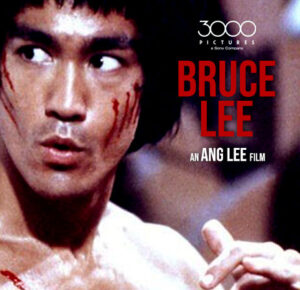


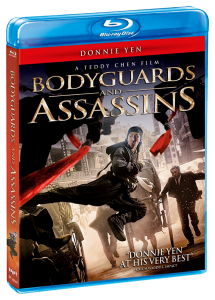



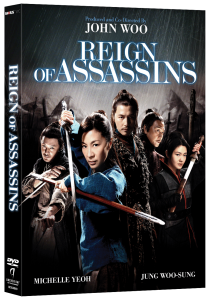
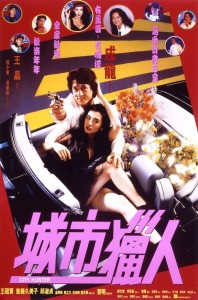
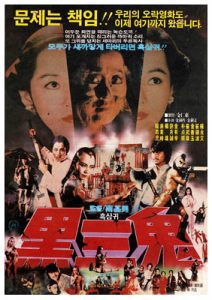
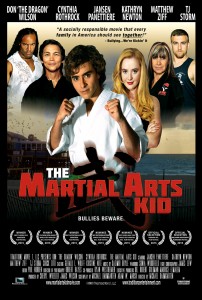

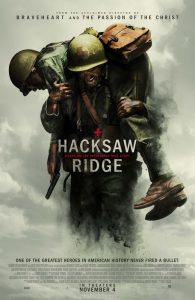
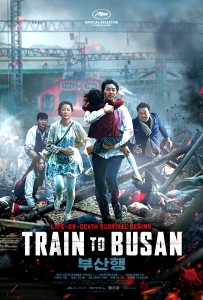
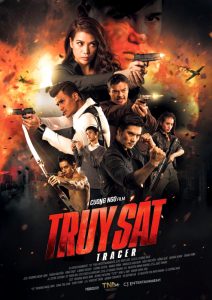




2 Comments